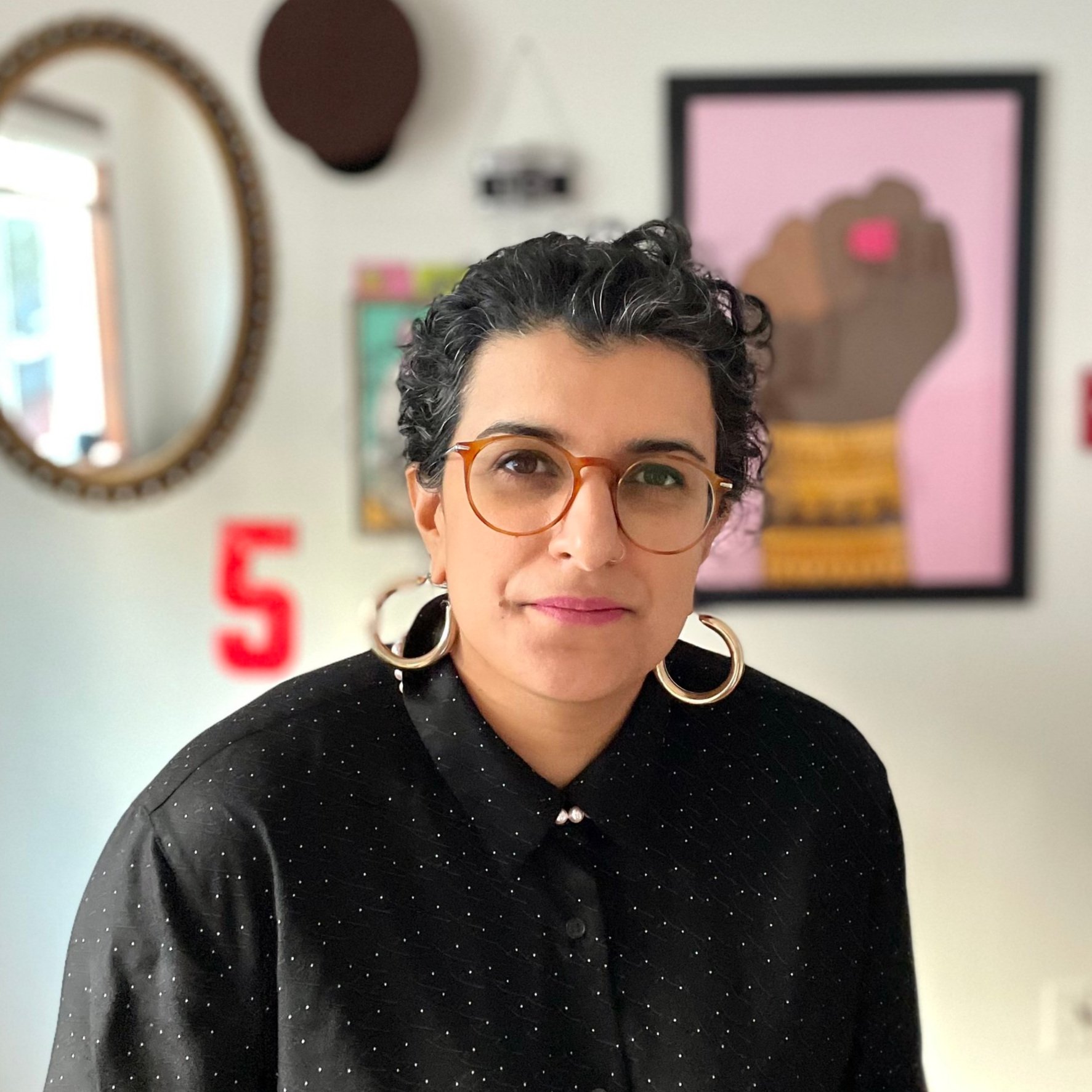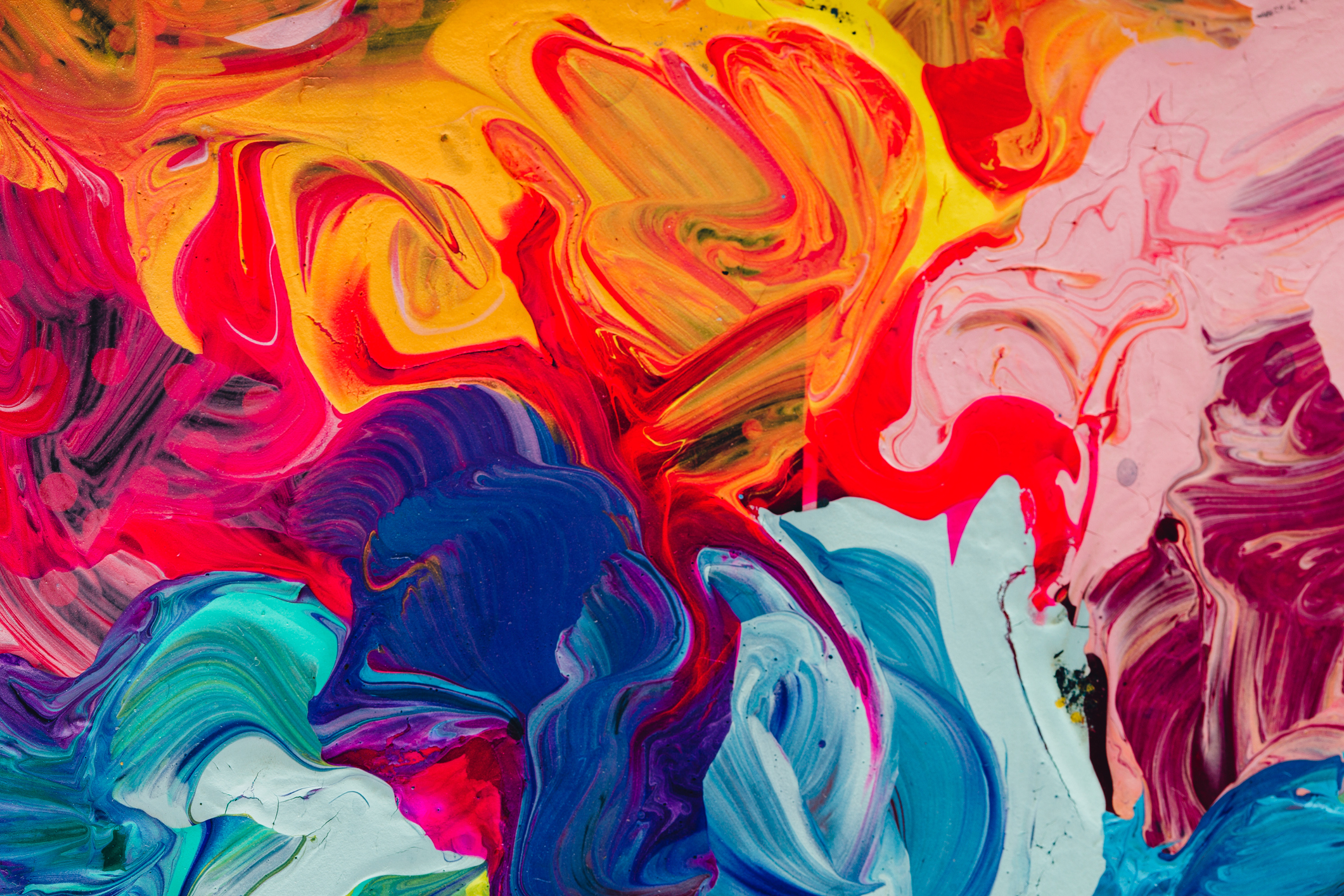Jag Nagra (JN): Everything around us is designed. I had no idea before, you know, and just looking all around me, whether it was a can of Pepsi or a book or whatever it was, there's someone behind everything that, you know, everything that we interact with. So, that really led me into my career in graphic design. That's what I went to school for. And slowly you know, that merged into me being a full time artist now.
Science World (SW): That’s Jag Nagra, a visual artist, graphic designer and self-taught illustrator.
JN: In my childhood, I was very influenced by one of my uncles who lived with us. I grew up in a multi-generational home. And my uncle, he would write these poems in Punjabi, which, at that young age, I didn't quite understand what they meant. But I understood that this was something artistic and really meaningful to him. And I also used to watch him draw a lot, and he would draw something for me and I would, you know, get my paper and crayons and try to replicate what he did. And that had a huge influence on me.
SW: Jag is also the Vice Chair of the Punjabi Market Collective, a team working together to revitalize Vancouver's historic Punjabi Market.
JN: I actually got involved [in the Punjabi Market Collective] through art. I had done an illustration series where I was drawing landmarks from all across the country, from every province and territory. And when I thought about what I wanted to draw for Vancouver, I thought of the Punjabi market street signs, because they're the first signs that we're bilingual in English and Punjabi in Canada.
SW: Jag posted the drawings on Instagram and Gulzar Nanda, who is now the chair of the Collective, reached out to her for a partnership.
JN: Art brought me to my work in Punjabi Market. But that work has now led to me discovering a whole new side of myself. And now everything that I create ties back to my roots, ties back to the different intersections of my identity. Being a queer, Punjabi, South Asian woman, you know, I want to celebrate different art, different skin tones, I want to celebrate my South Asian roots.
My wife and I have two children, they're four and two years old. It's really important to me that I create art that they can, you know, they can experience and connect with, because I didn't really have that when it came to my South Asian roots, right? So I want to show them Brown skin is beautiful, you know, big, thick, curly hair is beautiful, and not be ashamed of these things that I was ashamed of for so long.
I didn't, I don't know, I guess because I'm queer and Punjabi, I never really felt like there was a place for me. And now to be able to carve out my own place in the world and have my art represent me—who I am—I find that really powerful.
SW: Jag focuses her practice on celebrating darker skin tones and South Asian garments and motifs. Her style, which is bold, vibrant, and colourful, is one she developed over time.
JN: When I first started drawing, in 2012, I went straight to the computer. so I was drawing with my mouse straight in the, you know, Adobe Illustrator software, because I was too afraid or too self-conscious of what my hand could draw, right? I didn't trust the process. I didn't feel like it was realistic enough, or I just didn't think that… I just told myself I can't draw. So that's been a journey as well. So now I have, you know, this stack of paper, I have a pen, and just trusting that, you know, I've kind of made my, I guess my lack of formal training, into my style. So I have a very distinct style, and I just trust what my hand does.
SW: Now, Jag has created jerseys for the Vancouver Canucks, lanterns for LunarFest and public art installations across Metro Vancouver.
JN: For me it's been a lifetime of experimenting, you know, whether I knew I was destined to be an artist in my younger years or not. But once I started creating art, it was an experiment of, you know, trying out different styles, whether it was just minimal designs on the computer versus now hand drawing everything—it's just trying to discover new things. My art is very, very colorful. I want people to feel a sense of hope when they see my art. I hope people see hope. I hope they see diversity, I hope they see inclusion through my art. And I hope everybody, regardless of what their background is, sees themselves in my art somehow.

